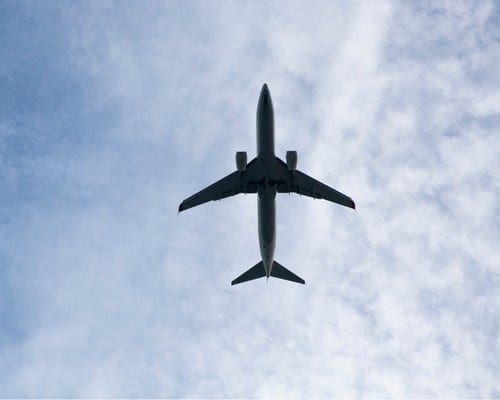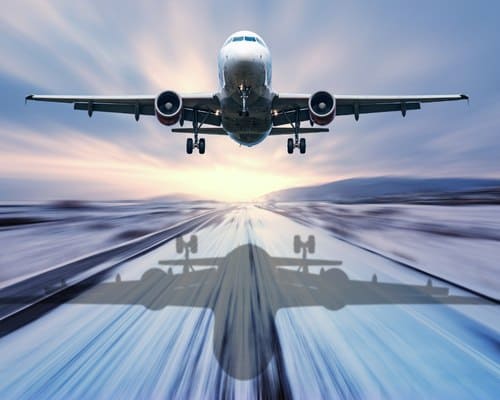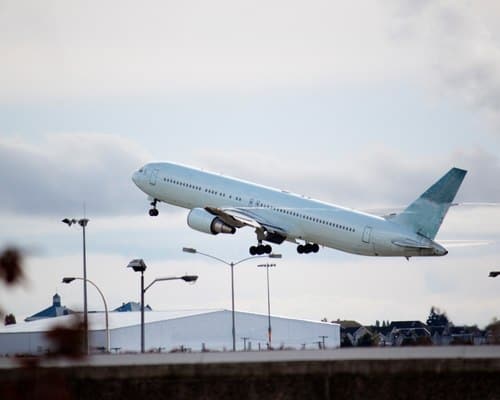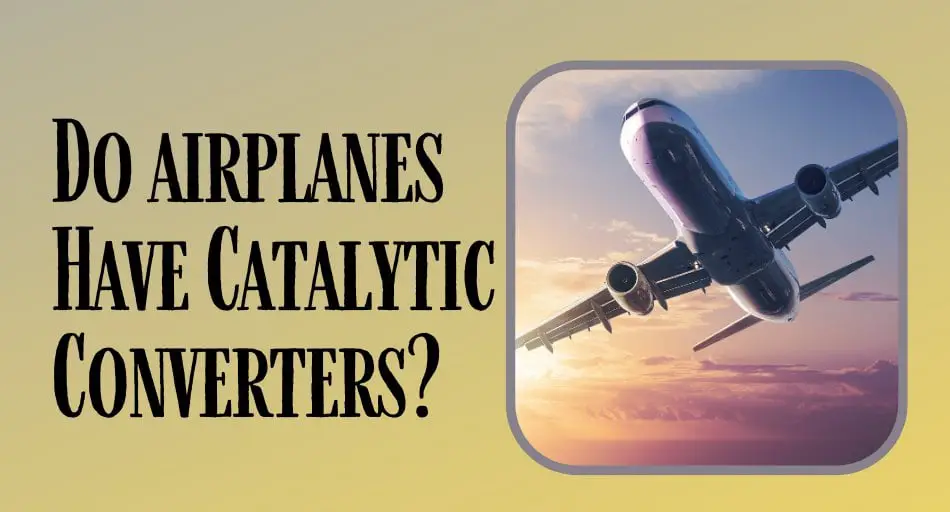With the emergence of a focus on protecting our environment, catalytic converters have become more and more popular. In fact, they’re required in all fuel-powered automobile vehicles after a certain production date.
That can make you wonder: Do all modes of transportation have catalytic converters? For example, are airplanes equipped with them just like automobile vehicles?
Do Airplanes Have Catalytic Converters?
Airplanes don’t have catalytic converters. They’re exempt from any rule concerning reducing toxic emissions since it’s more important for an airplane to be as light as possible and have maximum engine performance to be safe.
So, since catalytic converters would prevent that, airplanes aren’t equipped with them.
With that said, some types of airplanes do have catalytic converters, but not in the engine. They are found in pressurization systems, where they help prevent toxic gases from entering the cabin.
But not all modern aircraft are equipped with these.
What does a catalytic converter do on a plane?

Similar to a catalytic converter in automobile vehicles, a catalytic converter in an airplane helps with filtering out harmful substances. But this filter isn’t found in the engine of an airplane.
A catalytic converter, most commonly known as an ozone converter, is found in the pressurization system of an aircraft.
They function similarly to standard catalytic converters and reduce the number of toxic gases in the cabin.
These filters are much more complicated than the exhaust systems in automobile vehicles. They help in venting and removing exhaust gases from the engine while decreasing noise.
In addition, they also contribute to supplying the cabin with heat and preventing toxic gases from entering it.
In short, ozone converters convert any unbreathable gases into breathable oxygen in the cabin, improving air quality and safety.
Do all planes have catalytic converters?
When it comes to standard catalytic converters in the engine, airplanes don’t have them, seeing as they are exempt from being equipped with them.
That said, some airplanes do have catalytic converters, called ozone converters, in the pressurization system. Unfortunately, not all modern aircraft are fitted with these filters.
Whether a plane has an ozone converter depends on its size, model, and flight duration.

Firstly, all aircraft that fly above 27,000 feet (around 8,229 kilometers) need to be equipped with an ozone converter and have it regularly cleaned by a professional to ensure that it works properly.
An ozone converter is also required for all flights lasting more than four hours since the ozone levels accumulate, reaching unsafely high levels. So, they need to be reduced by an ozone converter.
Aside from that, not all modern aircraft are equipped with an ozone converter, but they might be.
Can a plane fly without a catalytic converter?

Since not all airplanes have catalytic converters, it’s perfectly possible for an airplane to fly without one. But it only applies to airplanes that don’t have catalytic converters in the first place.
Planes that need to be equipped with a catalytic converter are those flying at high altitudes and those with a flight duration longer than four hours.
Aside from the airplanes fulfilling the criteria mentioned above, the rest of modern aircraft don’t have catalytic, or ozone, converters.
This is mostly to ensure that the plane is as light as possible and because there’s no law that requires these airplanes to be equipped with a catalytic converter.
Is it a requirement for airplanes to have catalytic converters?
Many planes that are in use these days and in compliance with modern exhaust laws don’t have catalytic converters.
This means that there’s no universal law stipulating that all airplanes need to be equipped with a catalytic, or ozone, converter.
With that said, some airplanes do need to have an ozone converter in the pressurization system.
First of all, this requirement applies to all flights longer than four hours. This is because ozone accumulates at high levels after this time, so it’s important that there’s an ozone converter present that can alleviate the negative effects of this gas in the cabin.
Similarly, an ozone converter is needed when the aircraft flies at extremely high altitudes, where the concentration of ozone is too high, regardless of the flight time.

So, in these instances, an airplane is required by law to have an ozone converter.
You can also look at airplanes’ lack of catalytic converters using a different perspective.
Airplanes fly at extremely high speeds. As a result, their engines need to perform at their finest to ensure that the journey is as safe as possible. This means that the plane also needs to be as light as possible.
Because of that, the presence of a traditional catalytic converter would do more harm than good on an aircraft.
In addition, turbine engines present in modern aircraft produce very small amounts of carbon monoxide (CO).
This is because they operate at high altitudes where there’s a lot of oxygen that breaks down this gas.
So, airplanes don’t really need a catalytic converter, at least one that’s present in fuel-powered automobile vehicles.
Are planes without an ozone converter less safe?

Some experts do argue that airplanes without the presence of an ozone converter are less safe. But it depends on how often an individual flies, how long the flights last, and many other factors.
Most ozone converters decompose 90-98% of the ozone found in the air stream in the aircraft cabin.
This is pretty significant, especially when thinking about the fact that airplanes without an ozone converter have that much more ozone present in the cabin.
Proponents of ozone converters state that all modern aircraft should be equipped with this type of filter for safety since, without one, the ozone levels in the cabin are still too high, no matter how long the flight lasts.
Conclusion
Overall, only some airplanes these days have catalytic converters, also called ozone converters.
They serve two purposes: to reduce pollutant emissions from the aircraft into the air and to reduce the emission of harmful substances directly into the aircraft from the engine.
There are also several requirements concerning which types of airplanes need an ozone converter.
So, just because one model of an aircraft is equipped with an ozone converter doesn’t mean others are too.
Sources: ACS, Research Gate, PMC, and Frontiers

Jack is the owner, chief editor, and senior writer of this website.
Machinery, engines, and farming have always been a passion of his since he was a young boy. Growing up on a small farm in rural America, he learned the value of hard work and dedication from an early age.
After completing his degree in Engineering, he decided to follow his dream and became a farmer in 2009.
Since then, he has gained a wealth of knowledge and experience in the field. He has grown a variety of crops, tended to farm animals, and worked with all sorts of farming machinery. Continue reading…





